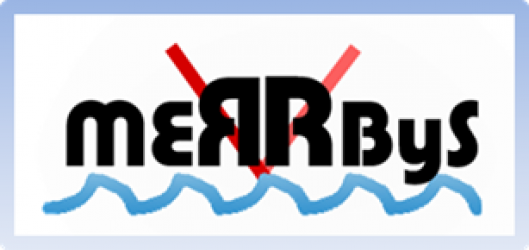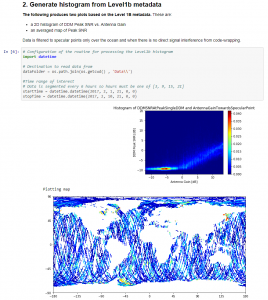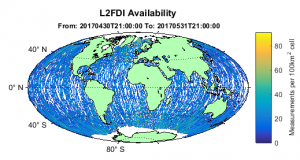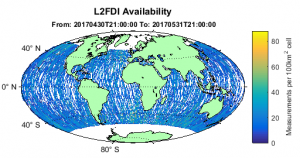There are three significant updates to announce for the MERRByS service.
Mission extension – Continuous GNSS-R
The TDS-1 mission ended and since February 2018 it has been operating with a mission extension. The SGR-ReSI is now running 7/7 days, rather than the 2/8 as in the first 3 years. This is increasing the coverage and sampling by a factor of 4.
To support continuous operations the DDMs are now selected onboard to only those with antenna gain > 0dB, and compressed using a variable quantisation rate. We are not expecting users to see differences from this compression process. Further details are available on request and will be put in the Product Manual in due course. The L1b version has been increased to V0.71 to support the compression.
Data update every 6 hours
The 2nd announcement is that MERRByS is now being updated every 6 hours with new data to the FTP server. There are two streams of data available.
Standard Users:
- 1 Month latency
- Apply for account password, as before by the registration page
Fast Data Users:
- 24-48 hour latency
- Providing pilot data service – demo of data release within 1-2 days of measurement
- Additional interaction with SSTL & NOC – support and feedback
- Apply on the registration page with your request
New Ocean Wind Product
The 3rd announcement is that the L2_CBRE (Calibrated Bistatic Radar Equation) V0.5 Algorithm has been incorporated into MERRByS. The National Oceanography Centre (NOC) have developed this algorithm to use additional receiver and transmitter corrections to improves the wind-speed measurement. This is the algorithm as presented in GNSS+R 2017, incorporated into MERRByS.
It should be noted that this is currently preliminary work and is expected to be updated soon with a new version. Currently the coverage is sparse due to a known flagging issue.
We will currently be putting the CBRE and FDI ocean wind speed products alongside each other.




